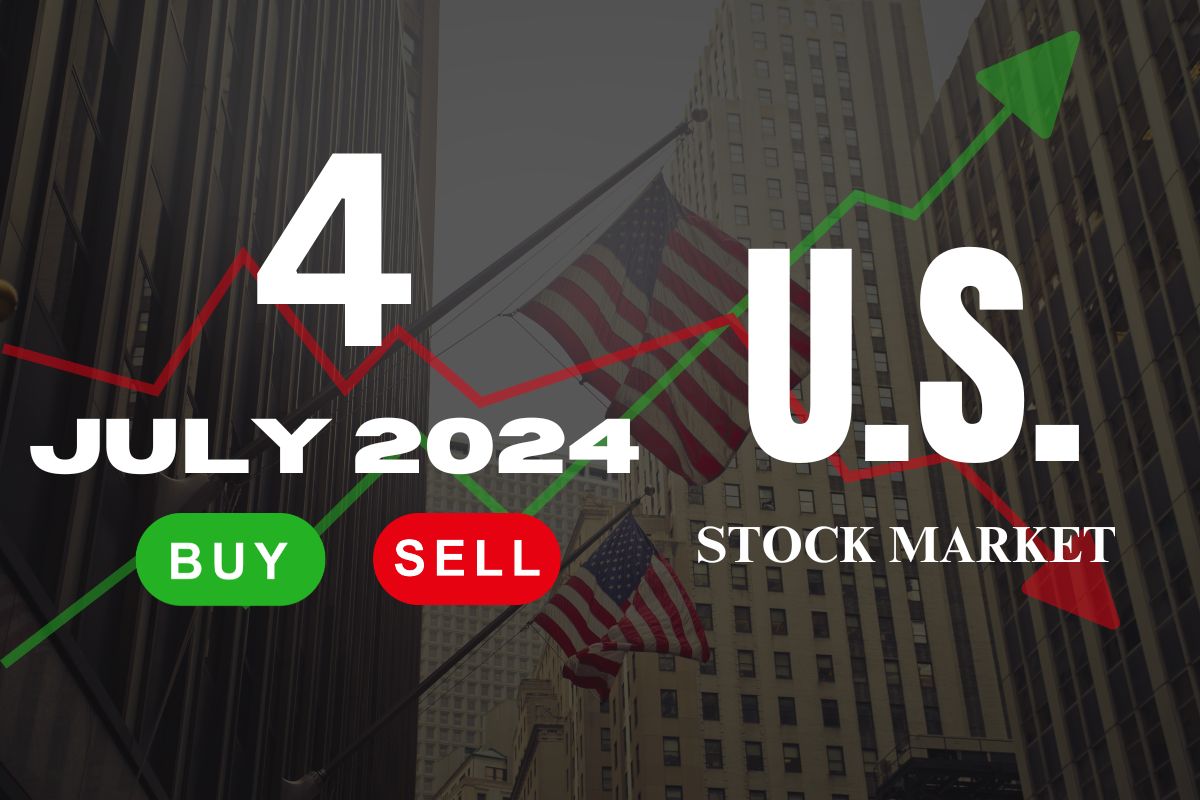Overview of Today’s Stock Market Performance
The stock market today witnessed significant turbulence, with major indices displaying notable volatility. The Dow Jones Industrial Average, a key indicator of market health, led the downward trend, closing at 33,587.68, down by 1.34%. This decline marks a considerable pullback from the previous day, where it had shown modest gains. Similarly, the S&P 500 experienced a drop, ending the day at 4,293.41, a 1.19% decrease. The tech-heavy Nasdaq Composite was not spared either, falling by 1.65% to close at 13,031.68.
The fluctuations in the stock market were largely influenced by rising Treasury yields, which rattled investor confidence. The 10-year Treasury yield surged to 1.75%, its highest level in several months, prompting concerns about higher borrowing costs and their potential impact on corporate profits. This spike in yields triggered a sell-off in equities, particularly in sectors that are highly sensitive to interest rate changes.
Throughout the trading day, the market experienced substantial volatility, with the Dow Jones fluctuating within a range of over 500 points. Notable lows were observed in sectors such as technology and consumer discretionary, which typically suffer when yields rise. On the other hand, energy stocks showed relative resilience, buoyed by increasing oil prices.
Trading volume was also notably high, indicating heightened investor activity as market participants reacted to the shifting economic landscape. Compared to the previous day’s performance, today’s movements underscore a stark contrast, highlighting the market’s sensitivity to macroeconomic indicators.
In summary, today’s stock market performance was characterized by significant declines across major indices, driven primarily by rising Treasury yields. This environment of increased volatility and investor anxiety underscores the importance of closely monitoring economic indicators and their potential impact on market dynamics.
Impact of Rising Treasury Yields
Rising Treasury yields have become a focal point for investors, significantly influencing the stock market’s current trajectory. Treasury yields, essentially the interest rates on U.S. government debt securities, are crucial indicators of investor sentiment and economic conditions. When yields rise, it often signifies growing confidence in the economy, but it also introduces new concerns.
Recently, the benchmark 10-year Treasury yield has been trending upwards, capturing the attention of market participants. This yield is particularly significant as it serves as a barometer for long-term interest rates and is closely watched by investors. As the 10-year yield rises, borrowing costs for corporations and consumers tend to increase, potentially slowing economic growth. Additionally, higher yields can make fixed-income investments more attractive compared to stocks, prompting a shift in asset allocation.
The uptick in Treasury yields can be attributed to several factors. Firstly, robust economic data has fueled expectations of sustained economic recovery, leading to higher yields. Indicators such as strong employment numbers, increased consumer spending, and rising manufacturing activity suggest a resilient economy, contributing to the upward pressure on yields. Secondly, inflation expectations play a pivotal role. As inflation fears mount, investors demand higher yields to compensate for the anticipated erosion of purchasing power.
Federal Reserve policies are another critical element influencing Treasury yields. The Fed’s decisions on interest rates and asset purchases directly impact yield movements. Recent signals from the Fed about the potential tapering of its bond-buying program have heightened yield volatility. Investors are closely monitoring the Fed’s stance on monetary policy, as any shift could have significant implications for yield trajectories and, by extension, the stock market.
In summary, the rise in Treasury yields reflects complex dynamics within the economy and financial markets. While it underscores optimism about economic recovery, it also poses challenges for the stock market by increasing borrowing costs and enhancing the appeal of bonds. Understanding these intricate relationships is essential for investors navigating the current market environment.
The performance of various sectors within the stock market today exhibited significant volatility, largely driven by the rising Treasury yields. This sector-by-sector analysis aims to provide a detailed overview of how different industries were impacted by these financial dynamics.
Technology Sector
The technology sector experienced a substantial downturn as investors showed heightened sensitivity to rising Treasury yields. Notable companies such as Apple and Microsoft saw their stock prices decline by 2.5% and 3.1%, respectively. Higher yields tend to diminish the present value of future earnings for growth-oriented companies, which is a characteristic of many tech firms. Additionally, sector-specific news, including regulatory concerns and supply chain disruptions, further exacerbated the negative sentiment.
Financial Sector
Conversely, the financial sector displayed relative resilience amidst the broader market slide. Banks and financial institutions typically benefit from rising yields as they can charge higher interest rates on loans. For instance, JPMorgan Chase and Goldman Sachs both recorded marginal gains of 0.8% and 1.2%, respectively. The stability within the financial sector underscores its potential as a hedge against inflationary pressures and higher rates.
Consumer Goods Sector
The consumer goods sector faced mixed outcomes, with consumer staples faring better than consumer discretionary stocks. Companies like Procter & Gamble managed a slight increase of 0.4%, benefiting from their status as defensive stocks. On the contrary, consumer discretionary firms such as Tesla and Amazon saw declines of 2.7% and 2.9%, respectively. The sector’s mixed results reflect the divergent impacts of economic uncertainty and consumer spending patterns.
Energy Sector
The energy sector also felt the strain of today’s stock slide, though it was somewhat cushioned by stable oil prices. Major players such as ExxonMobil and Chevron experienced minor declines of around 1%, indicating a relatively modest impact compared to other sectors. The sector’s performance was influenced by ongoing geopolitical tensions and supply chain constraints, which continue to shape market expectations.
Overall, the sector-by-sector analysis reveals a complex interplay of factors driving today’s market movements. While some sectors managed to withstand the pressure of rising Treasury yields, others were significantly affected, highlighting the diverse responses within the stock market landscape.
Investor Sentiment and Future Outlook
Today’s stock market decline, led by the Dow, has stirred a mix of anxiety and caution among investors. The rise in Treasury yields has particularly rattled nerves, prompting a reevaluation of risk and potential returns. Market analysts are observing a shift in sentiment as investors grapple with the implications of higher yields on equity valuations and economic growth.
Jane Doe, a senior financial analyst at XYZ Investments, remarked, “The market is experiencing heightened volatility as investors are digesting the impact of rising Treasury yields. Higher yields often signal increased borrowing costs for companies, which can squeeze profit margins and lead to lower stock prices.” This sentiment is echoed across the investment community, with many experts emphasizing the delicate balance between growth prospects and inflation fears.
Current investor sentiment is a mix of cautious optimism and guarded pessimism. While some investors are concerned about the potential for a prolonged market correction, others see opportunities in sectors less sensitive to interest rate fluctuations, such as technology and consumer staples. Financial expert John Smith of ABC Advisors noted, “Investors are looking for safe havens and sectors that can offer stability amidst the uncertainty. Diversification remains a key strategy in navigating these turbulent times.”
Looking ahead, several factors could influence investor sentiment and market performance. Upcoming economic reports, including employment data and consumer confidence indices, will be closely watched for signs of economic resilience or weakness. The earnings season also holds significant weight, as corporate results will provide insights into how companies are managing cost pressures and maintaining growth trajectories.
Geopolitical events, such as trade negotiations and international conflicts, remain wildcard factors that could sway market dynamics. Analysts caution that unexpected developments in these areas could lead to sudden shifts in investor sentiment, emphasizing the importance of staying informed and adaptable in investment strategies.
In sum, while the immediate outlook for the stock market is clouded by uncertainty, a forward-looking perspective that considers a range of potential scenarios and factors will be crucial for investors aiming to navigate the current landscape effectively.
Read More:
What Is APENFT Token? All You Need To Know
US Stock Market Time and Trading Hours

Zach Cooper is an experienced Crypto & Financial news journalist, having written for Moneycheck.com, The wall street, Computing.net and is Editor in Chief at wallstreetsights.com







